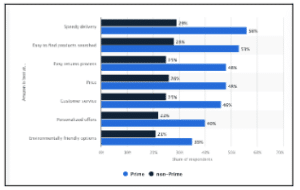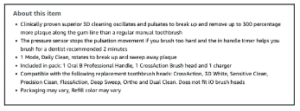Building Your Amazon Business – Part 3
Introduction
This is the third in a series of blog posts that will cover some of the key elements when it comes to building your Amazon business. In the first post, we talked about some of the key elements when it comes to establishing your presence on Amazon. In the second post, we discussed Product Page details. This blog post discusses marketing and advertising your business on Amazon.
Part 3 – Marketing Your Business on Amazon
Advertising on Amazon incorporates a number of items but moves beyond the surface advertising seen from many brands. In addition to sponsored products, deals, coupons and promotions, any successful Amazon advertising campaign built to scale will combine non-traditional ad initiatives with the standard programs. This will include keyword research, SEO, competitor analysis, customer service management, review solicitation, account health oversight and voice of the customer (VoC) responses. Each of these plays a role in the overall marketing of your Amazon business and serves to enhance your presence on the platform and contribute to your ever growing reputation and visibility.
The Amazon Advertising Basics
Briefly, these are some of the basic marketing and advertising elements you will want to capitalize on:
- Sponsored Products – promote your own products which allows you to create listings in specific categories
- PPC – similar to Google, to bid on specific keywords that customers search for when looking for similar products
- Vine Programs – Amazon driven reviews from Amazon ‘authenticated’ influencers
- Lightning Deals – allow you to run short term deep discount deals
- Promotions & Coupons – provide discounts on certain products or variation in order to move inventory
ACOS and ROAS
It’s great to run ad campaigns but you need to pay close attention to the data they generate. In your Amazon dashboard, under the Campaign Manager, you will find all of the analytics for your ACOS (Advertising Cost of Sales) and ROAS (Return on Ad Spend) results. Amazon defines ACOS as “The percentage of your sales that you spend on advertising” and ROAS as “The revenue (return) you receive from your advertising investment”.
Ideally, you want a higher ROAS and a lower ACOS. Fortunately, ad spends are in real time so you can easily adjust underperforming programs and allocate funds to revenue generating campaigns. However, keep in mind that all lower performing ROAS campaigns are not all negative as they may also be generating page views which can enhance brand awareness for future purchasing decisions. Ideally, you want to monitor ACOS and ROAS at least once a week in order to ensure campaigns are performing optimally.
Advertising Content
In addition to the different campaign options available on Amazon, there are other features you can add to your product pages that will add to your advertising efforts. Many of the items we discussed in our previous post in this series called “Creating Amazon Product Detail Pages” (put a link the post here) add to the overall customer advertising and marketing experience including Product Title Optimization, Informational Bullets, Product Description and Optimization, A+ Content, Product SEO and Product Imagery and Videography all play a role in your marketing efforts. The benefit of these features is that they don’t have a direct cost associated with them and you have full control over each one.
Reviews and Ratings
Ratings are a crucial part of any growing Amazon business. According to Statista (https://www.statista.com/statistics/623659/amazon-customer-review-usage-usa/), over 90% of all Amazon shoppers trust the reviews they read on Amazon in one form or another. Only 6% don’t trust the review which tells you that generating positive reviews should be a key part of your marketing strategy. This means that customer support, responding to questions, on time shipping and delivering quality products will all serve to drive organic sales results on Amazon.
Takeaways
Amazon advertising is much more than PPC and sponsored ad campaigns. There are a multitude of indirect marketing initiatives that when combined, come together to deliver synergistic results that can exceed expectations and generate positive results that individual campaigns cannot produce in a siloed approach.
Capitalizing on each of these opportunities will help your brand see positive results as you move towards optimizing ACOS and ROAS through direct and indirect channels.









